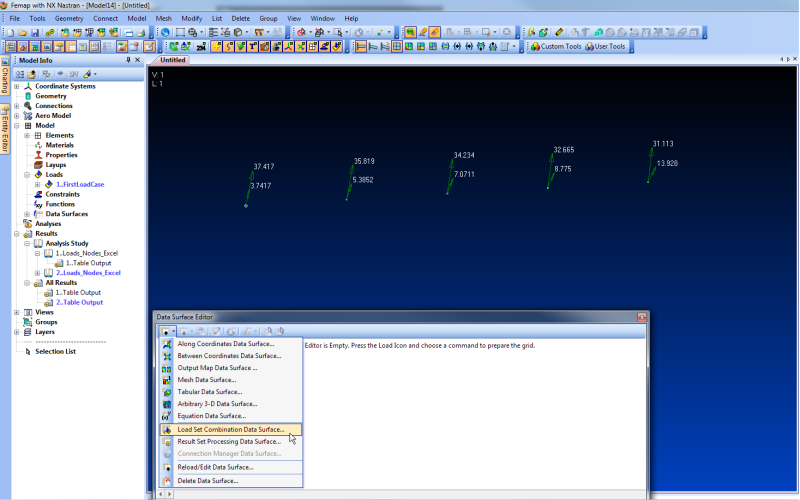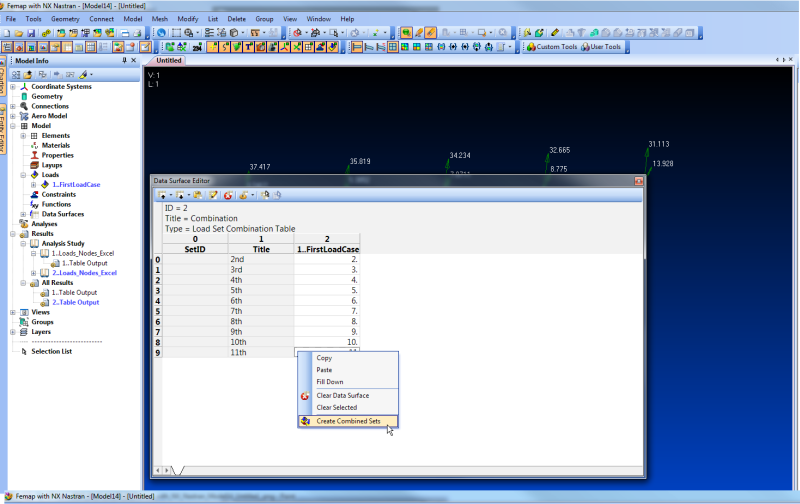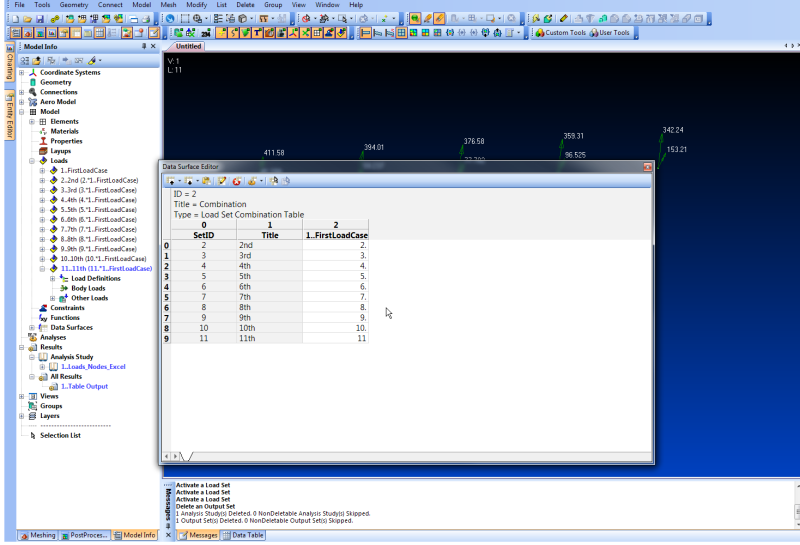Sparweb
Aerospace
- May 21, 2003
- 5,109
Hi
I'm still very new to FEMAP so hopefully there's a simple or obvious solution.
I have set myself up for a long slow workflow on an model of dozens on interlaced beams where I must find the stiffness in all 6 DOF at 16 specific points within the model.
My current workflow is to apply one unit load at one point in one direction, Analyze, Query the displacement at that point in the corresponding DOF, then delete that load and start again, with the next unit load in the next DOF.
Each change/query/analysis takes about 4 minutes per DOF, so 6 DOF at each point takes 24 minutes to complete, therefore the whole procedure will take all day.
Is there a way to streamline this process? I've considered applying all of the unit loads in separate load sets, then setting up analysis sets for each load set... there would be about 96 of them. This could churn away while I did something else, and then upon completion I could find some way to "scroll" through the result sets while extracting data. This might save a few hours if I knew it would work. The only query I know of if from the Info pull-down menu. Can I select all of the result sets before displaying the translations and rotations?
STF
I'm still very new to FEMAP so hopefully there's a simple or obvious solution.
I have set myself up for a long slow workflow on an model of dozens on interlaced beams where I must find the stiffness in all 6 DOF at 16 specific points within the model.
My current workflow is to apply one unit load at one point in one direction, Analyze, Query the displacement at that point in the corresponding DOF, then delete that load and start again, with the next unit load in the next DOF.
Each change/query/analysis takes about 4 minutes per DOF, so 6 DOF at each point takes 24 minutes to complete, therefore the whole procedure will take all day.
Is there a way to streamline this process? I've considered applying all of the unit loads in separate load sets, then setting up analysis sets for each load set... there would be about 96 of them. This could churn away while I did something else, and then upon completion I could find some way to "scroll" through the result sets while extracting data. This might save a few hours if I knew it would work. The only query I know of if from the Info pull-down menu. Can I select all of the result sets before displaying the translations and rotations?
STF



